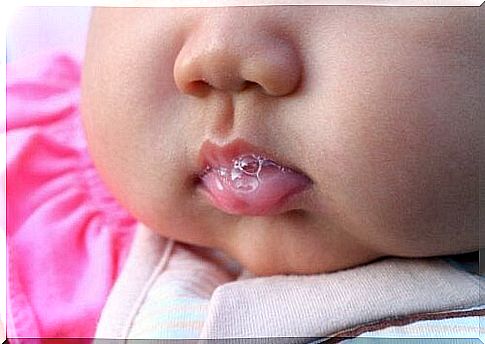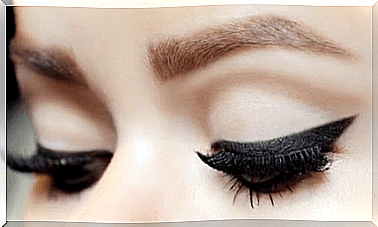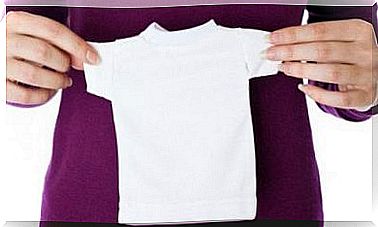Syalorrhea: What Is It And What Is Its Treatment?

Sialorrhea is what, in common parlance, is known as drooling. This condition is very normal in children between 15 and 36 months. However, it is considered abnormal if it occurs after 4 years of age.
Although sialorrhea seems like a condition that only affects appearance, the truth is that it can also be associated with serious health problems, such as cerebral palsy and Parkinson’s disease. It can also be a result of pregnancy or taking some medications.
What is sialorrhea and what are its causes?
Sialorrhea is a disease characterized by the inability to retain saliva in the mouth and make it progress to the digestive tract. It is also known as ptialism and is due to excessive saliva production or an abnormality in the way it is processed.
The most common causes of sialorrhea are neurological diseases. Among them are, as already mentioned, cerebral palsy and Parkinson’s disease, but it also occurs in those suffering from amyotrophic lateral sclerosis (ALS), Riley-Day syndrome and cerebral infarction sequelae.
This condition is also common in people who use antipsychotic, hypnotic, or tranquilizer medications. Likewise, it is common that during pregnancy there is a marked increase in saliva production between the second and fourth week of pregnancy.

Disorder characteristics
There are three salivary glands responsible for saliva production: parotid, submandibular and sublingual. The first produces a thin saliva, while the other two generate a thicker fluid that is also produced continuously and is often what causes suffocation.
In a day, about a liter and a half of saliva is produced, 70% of which is secreted by the submandibular and sublingual glands. Sialorrhea is not a disease that progresses to a more serious condition, but affects quality of life.
There is no doctor specializing in the treatment of sialorrhea. In case of suspicion, you should go to a general practitioner. He will refer you to a specialist, depending on the cause giving rise to the problem.
Classification of sialorrhea
From the point of view of its origin, sialorrhea is classified into two groups:
- Anterior: Originates from a neuromuscular deficiency associated with excessive saliva production. This causes the liquid to come out of the corners of the mouth or the lower lip.
- Posterior: when the problem originates in the flow of saliva that goes from the tongue to the pharynx.
According to the Thomas-Stonell and Greenberg rating scale, sialorrhea can be classified according to its severity or frequency. From this point of view, the evolution is as follows:
- Dry mouth.
- Light (wet lips).
- Moderate (moist lips and chin).
- Severe (wet clothes).
- Profuse (wet clothes, hands and utensils).
According to frequency, the scale is as follows:
- There is never drool.
- Occasional slobber.
- Frequent sialorrhea.
- Constant drooling.
Consequences
Sialorrhea is a relevant medical problem because it causes a notorious deficiency and an additional difficulty in the care of a patient with neurological problems. At first, this condition has consequences such as desquamation of the lips, muscle fatigue, dermatitis, changes in taste and speech difficulties.
However, from a physical point of view, the greatest risk is aspiration pneumonia due to difficulty in swallowing food. These types of patients are also more prone to oral infections.
On the other hand, the psychosocial consequences can be very serious. Drooling generates social rejection, even from caregivers. Likewise, this limits the normal performance of daily activities.

Recommended treatments
There are three ways to treat sialorrhea: speech therapy, pharmacology and surgery. The approach through speech therapy involves performing a series of exercises to inhibit pathological reflexes. It aims to improve the closing of the lips and the suction or swallowing of saliva.
Pharmacological treatment, on the other hand, is performed using anticholinergics, which help to reduce saliva secretion. These medications should be combined with exercise, but there are people who have an intolerance to this type of medication.
It is also possible to resort to the injection of botulinum toxin type A (TBA). It is applied directly to the salivary glands and also reduces saliva production. The most positive thing is that it generates few side effects.
If none of these measures work, the specialist will likely decide to perform surgical intervention. Remember that each patient is different and sometimes a combination of measures is necessary to be effective.









